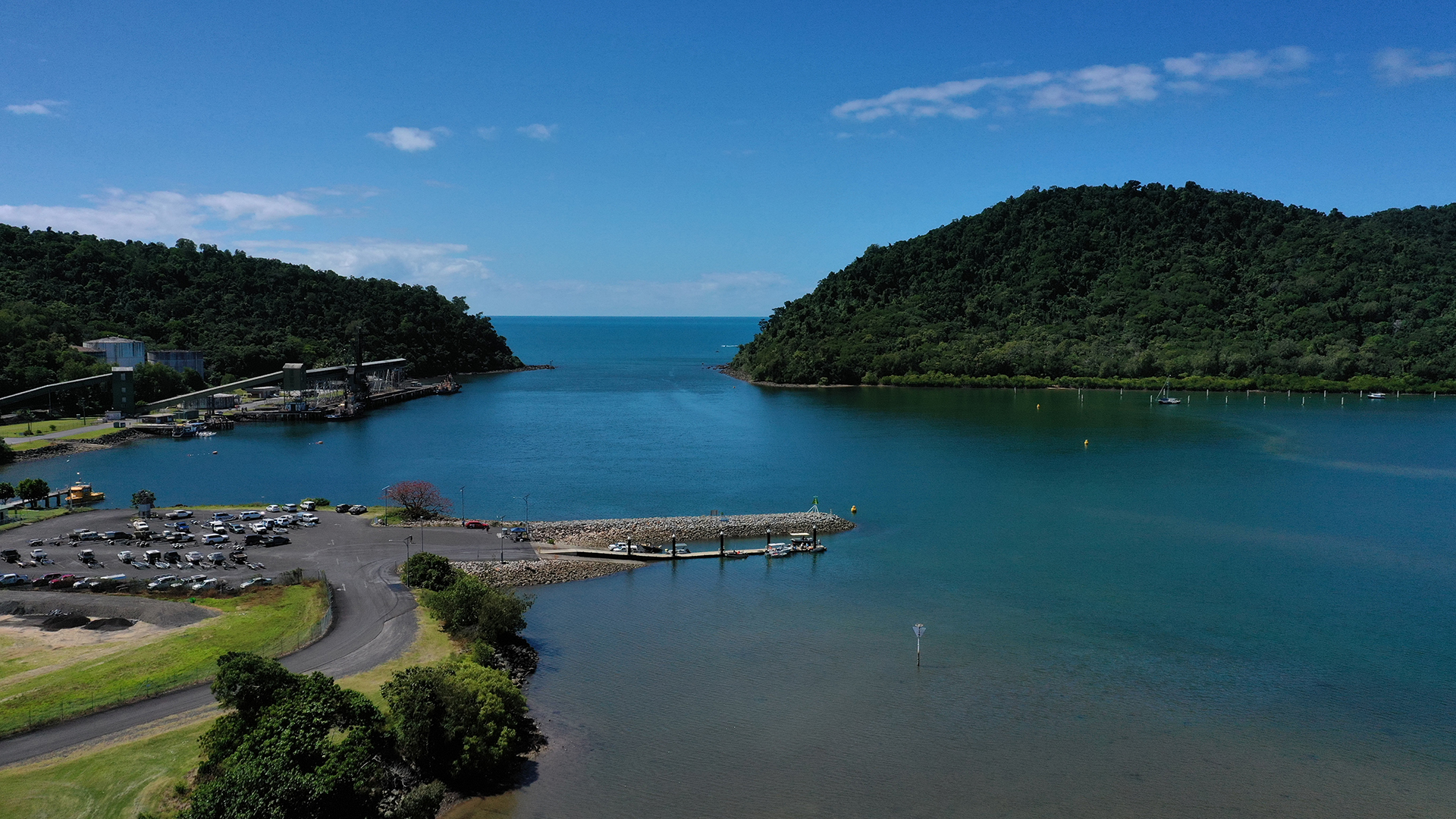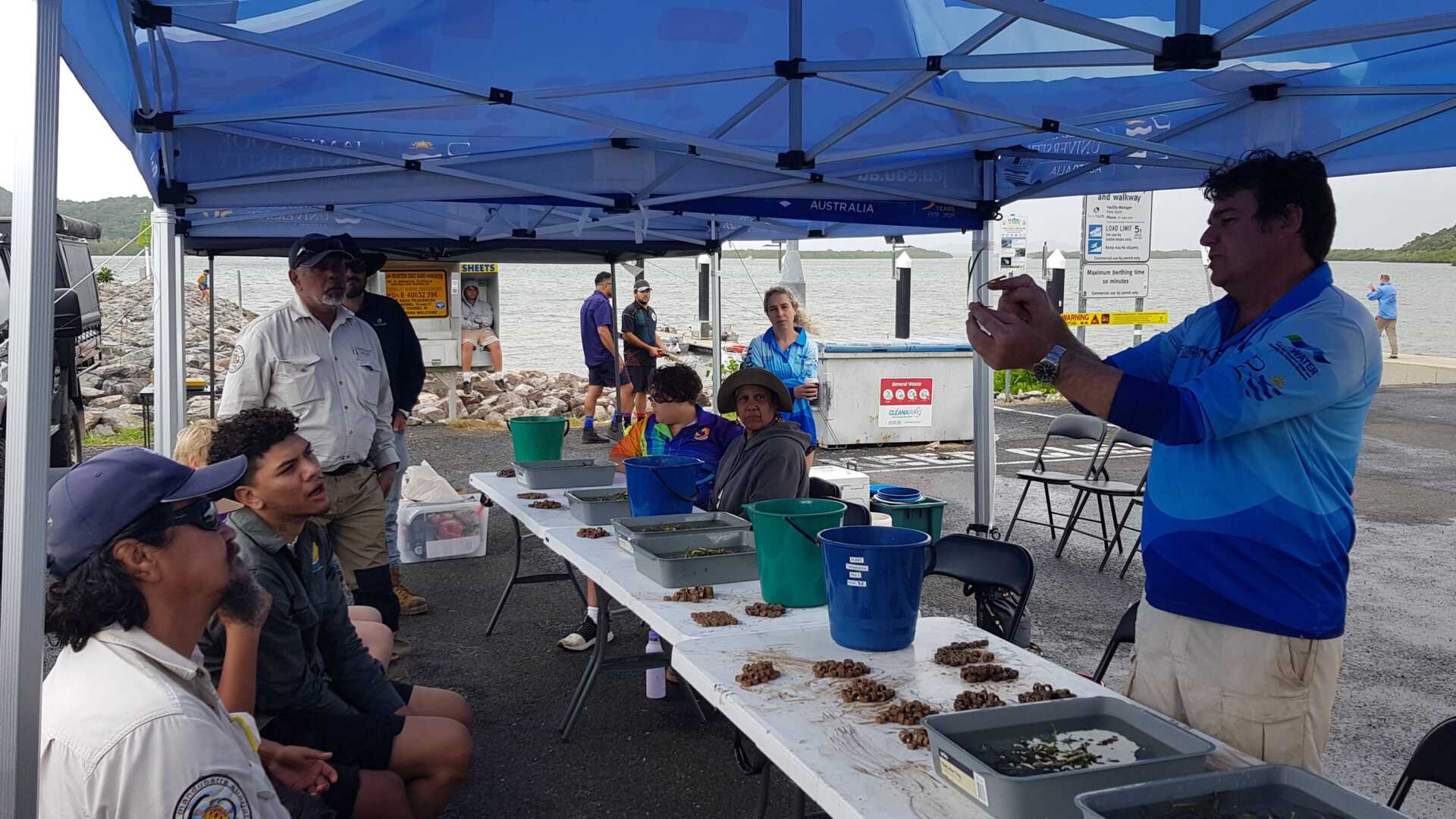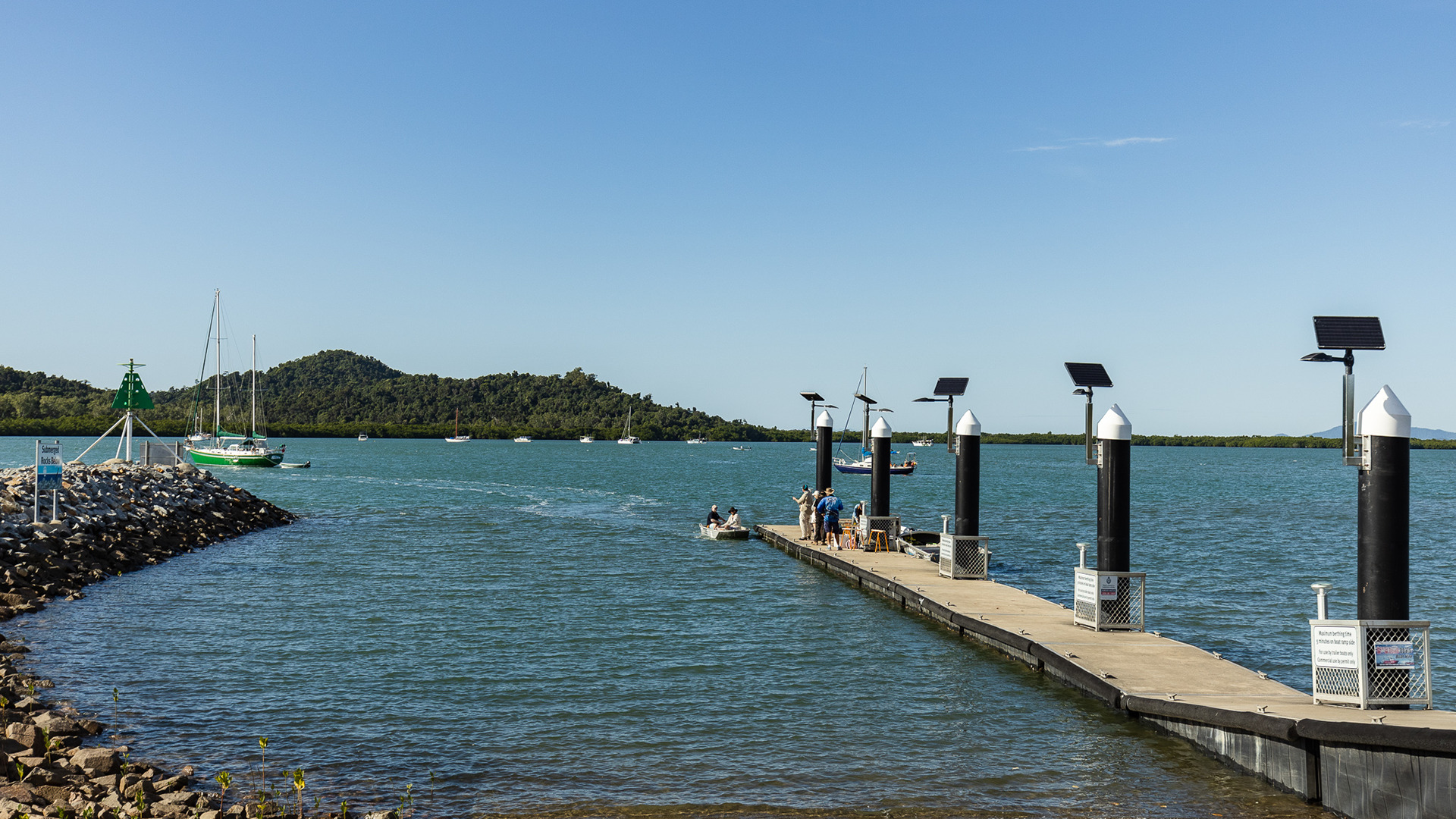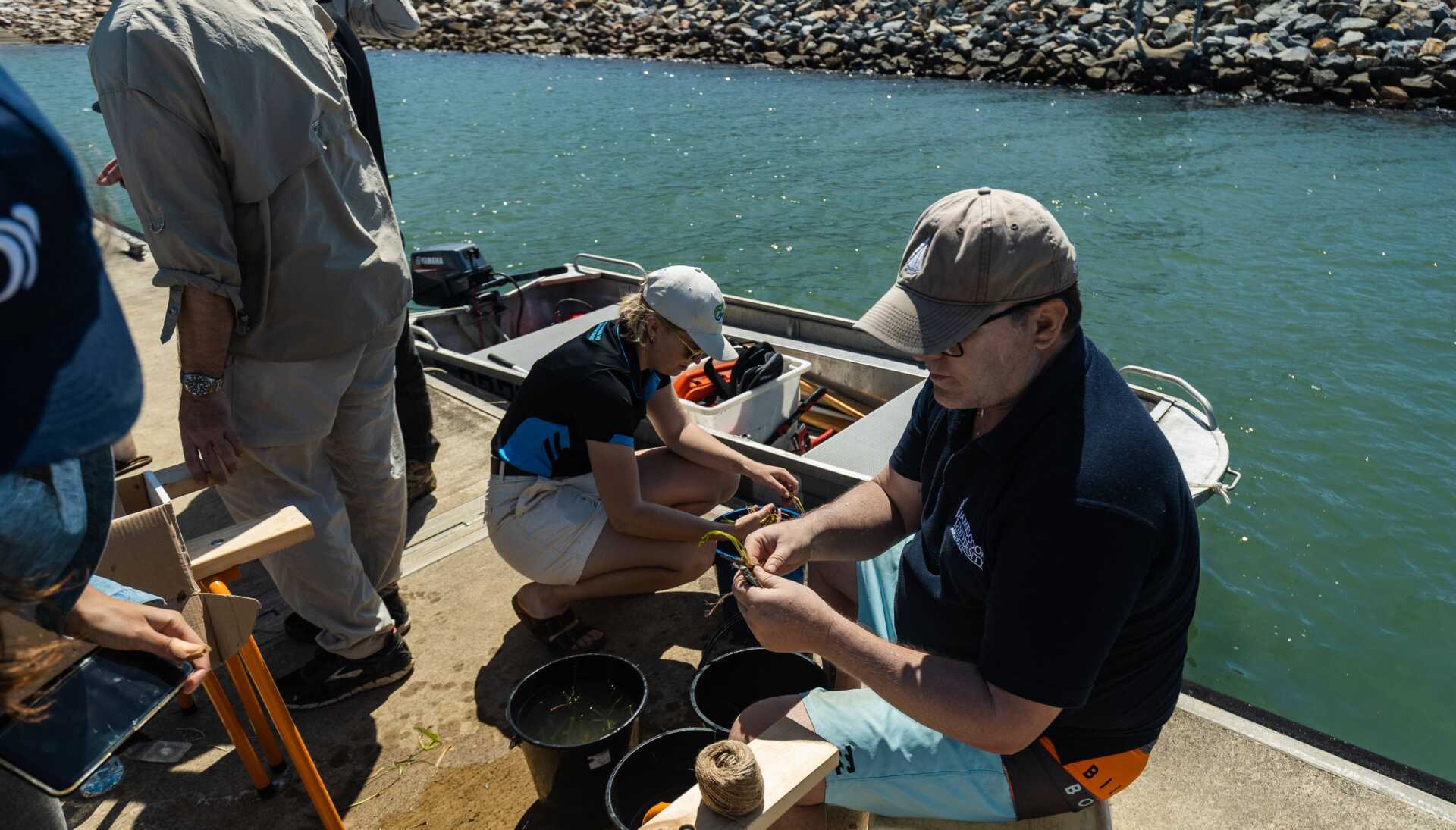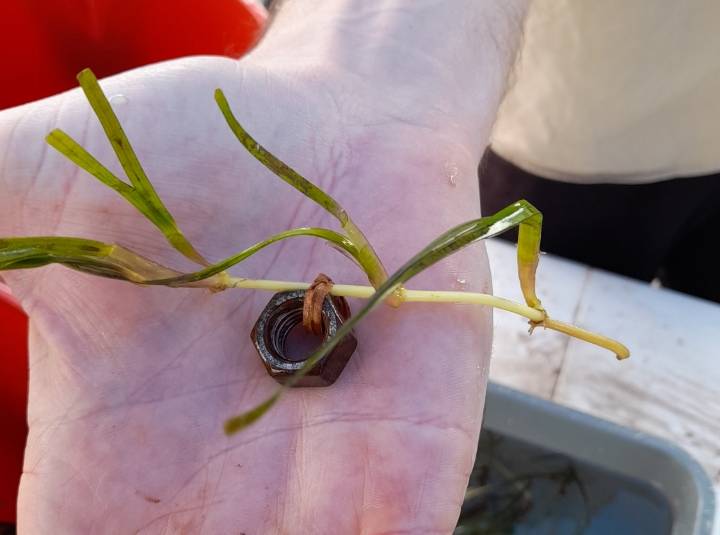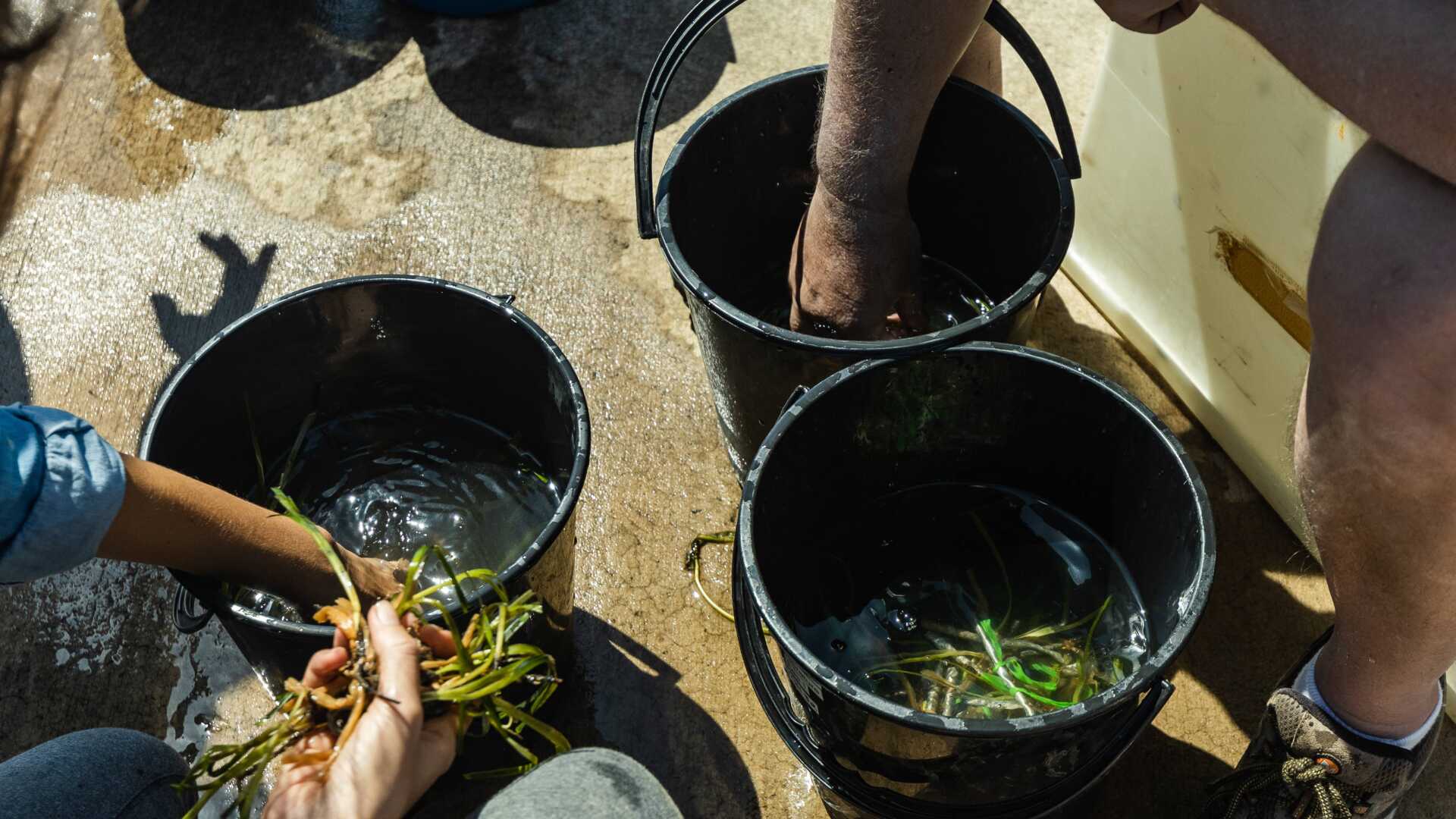Volunteers needed to ensure Cairns seagrass restoration project continues to grow

The restoration of seagrass meadows in North Queensland continues to grow but volunteers are needed to ensure this year’s projects at Cairns and Mourilyan Harbour are a success.
For the past four years, a project led by James Cook University TropWATER with support from OzFish Unlimited, Australia’s fishing charity, has been regenerating seagrass in Mourilyan Harbour, 100km south of Cairns.
The project is also being completed in collaboration with four Traditional Owner groups, local community groups and with funding support from BHP’s Blue Carbon Grants program.
The initial processing and planting part of this year’s project was held this week with more planting events to be completed in September.
Volunteers are needed for the next round of events, which will be held on September 5-9.
The processing days at JCU Cairns, Nguma-bada campus, Smithfield are:
5th September, 9.30am – 4.30pm
6th September, 9.30am – 4.30pm
7th September, 9.30am – 4.30pm
The planting days will be held at Cairns Yacht Club on September 8 from 10am and Mourilyan Harbour boat ramp the following day (September 9) at the same time.
You can register your interest here.
The final volunteer planting days will be held on September 18-22.
Dr Geoff Collins, OzFish Senior Project Manager North Queensland, said around 20 volunteers were needed to help sort the fragments of seagrass at JCU’s Smithfield campus, and to assist with preparation of transplants to the two planting sites at Cairns Yacht Club and the Mourilyan Harbour boat ramp.
You don’t need to be an expert, all training and equipment is provided and it’s easy to learn, all you need is to bring a bottle of water, long-sleeve shirt and a hat, and a willingness to learn and help the local environment.
The restoration started four years ago after JCU researchers identified that the seagrass meadows had been badly damaged after a couple of substantial wet season and cyclone events more than a decade ago.
Seagrass is collected by the TropWATER (JCU) Seagrass Ecology team in Trinity Inlet at Cairns before being taken to its Smithfield campus where it is sorted by hand.
Associate Professor Michael Rasheed from James Cook University is overseeing the project and he said the restoration is making an impact.
“For over a decade, the loss of these meadows has set off a ripple effect, robbing these ecosystems of their remarkable benefits,” he said.
“The absence of seagrass has deprived these habitats of their vital role as a food source for dugongs and green turtles, as well as being unable to provide essential nurseries for prawns and fish.”
“As we continue to expand this work there’ll be an increasing role for volunteers to help improve seagrass meadows, which are important for the health of our coastal fish stocks, both commercial and recreational.
“Barramundi, queenfish, mangrove jack and some of the trevally species love to hang around the seagrass areas.
“It’s critical these habitats are restored, not just for the sake of the marine life they sustain, but for the resilience of our coastal communities.”
The project initially used mesh frames and then tried potato-starch biopolymer mesh before deciding to simply use nuts and screws so that the plants sink into the mud.
“It sounds a bit rudimentary, but it works — tying individual seagrass fragments to hexagonal iron nuts that are just going to rust away, and dropping them in areas where they will grow and establish,” Dr Collins explained.
“It’s been a bit of an evolution, classic adaptive management, learning as we go.
“The meadows in the area used to be productive and healthy but now it’s just mudflats.”
He added that there had been an expectation that the seagrass would recover on its own like other locations up and down the coast but there’s a narrow mouth to Mourilyan Harbour which limits connection with the ocean currents compared to more open bays.
The seagrass meadows provide a safe haven for turtles and dugongs while also filtering the water and preventing coastal erosion.
They are also interconnected with the health of the Great Barrier Reef and seagrass losses can have a negative impact on the reef’s ecosystem.
And with stingers and crocodiles in the vicinity, boats are used to take the new fragments to the site where they’re dropped into the water.
“It’s completely impractical to wade out to plant the seagrass because you’d be knee deep in mud and when the tide’s up, you just don’t want to be getting into the water because the rangers see crocs all the time,” Dr Collins added.
The project is a collaboration between OzFish, James Cook University’s Seagrass Ecology Lab within the Centre for Tropical Water and Aquatic Ecosystem Research (TropWATER) and local Mandubarra, Goondoi and Gimuy Walubara Yidinji and Yirrganydji Land & Sea Rangers, with funding support from BHP’s Blue Carbon Grants program. The project is also supported by BCF – Boating, Camping, Fishing.
Registration is essential if you’d like to volunteer.

